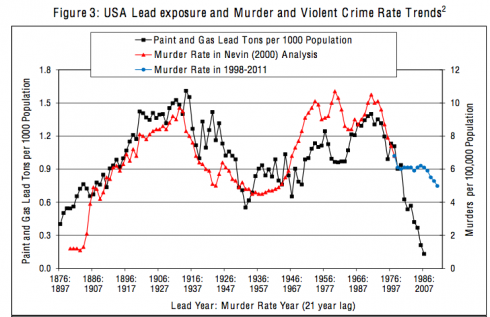You can now find the major greenhouse gas emitters (as well as other large facilities that emit pollutants) on the EPA’s mappable website.

Middle and High School … from a Montessori Point of View
You can now find the major greenhouse gas emitters (as well as other large facilities that emit pollutants) on the EPA’s mappable website.

We talked today about the smog in Beijing.

[A]t the time of the image, the air quality index (AQI) in Beijing was 341. An AQI above 300 is considered hazardous to all humans, not just those with heart or lung ailments. AQI below 50 is considered good. On January 12, the peak of the current air crisis, AQI was 775 the U.S Embassy Beijing Air Quality Monitor—off the U.S. Environmental Protection Agency scale—and PM2.5 was 886 micrograms per cubic meter.
–Carlowicz (2013): via NASA Earth Observatory
The pollution in Beijing seems to be a result of automobiles and construction, and not factories as you might think. One of my Chinese students (A.S.) pointed out that the Chinese government had moved a whole lot of factories out of Beijing about 10 years ago in preparation for the Olympics. Curiously, the factories were relocated to poorer areas as the cities have become wealthier; something we’ve seen at a global scale as well.
The relocation of factories out of Beijing is part of a mass migration of Chinese industry in recent years from wealthier cities, which have become environmentally conscious, to less-developed ones.
–Cha (2008): Relocation of Beijing factories only moved the problem in the Washington Post via the Seattle Times.
Zoe Rodriguez del Rey tried to measure the caffeine concentration in the seawater off Oregon by measuring its concentration in mussels. It’s an interesting measure of just how the stuff we eat and drink can affect the environment. Curiously, del Rey and her colleagues found lower concentrations near the cities’ sewage treatment plants compared to areas further away from the cities.
Scientists sampled both “potentially polluted” sites—near sewage-treatment plants, larger communities, and river mouths—and more remote waters, for example near a state park.
Surprisingly, caffeine levels off the potentially polluted areas were below the detectable limit, about 9 nanograms per liter. The wilder coastlines were comparatively highly caffeinated, at about 45 nanograms per liter.
“Our hypothesis from these results is that the bigger source of contamination here is probably on-site waste disposal systems like septic systems,” said study co-author Elise Granek.
— Handwerk (2012): Caffeinated Seas Found off U.S. Pacific Northwest in National Geographic.

Rick Nevin‘s research provides a lot of evidence that the amount of violent crime — murders, aggravated assault, etc. — are the result of lead pollution. Lead was added to gasoline until the 1970’s. When the gasoline was burned in car engines, the lead was released into the atmosphere where it could get into people’s systems just by breathing.
Quite a number of studies taken together have shown that high blood lead levels result in lower IQ’s, which, in turn, seems to increase aggressive behavior.
Long-term trends in paint and gasoline lead exposure are also strongly associated with subsequent trends in murder rates going back to 1900. The findings on violent crime and unwed pregnancy are consistent with published data describing the relationship between IQ and social behavior. The findings with respect to violent crime are also consistent with studies indicating that children with higher bone lead tend to display more aggressive and delinquent behavior.
— Nevin (2000): How Lead Exposure Relates to Temporal Changes in IQ, Violent Crime, and Unwed Pregnancy (pdf pre-print) in Environmental Research.
Kevin Drum summarizes the research and goes into the details to disprove the other theories for peaks in crime rates in the last century.
… one metric ton of carbon dioxide is what’s produced by an average month of electricity use in a U.S. home.
— Troeh (2012): California’s first carbon auction launches pollution market on Marketplace.
California recently auctioned off a set of carbon emission permits as the start of an effort to reduce emissions of greenhouse gasses with an emissions trading system.
The first 23.1 million permits sold out at $10.09 per ton.
Eve Troeh discusses:

We were talking about environmental disasters, specifically nuclear radiation, and looking at pictures of Chernobyl, when a student asked if anyone still lived there. The city and surrounding region was evacuated, however some 1,200 people returned to their homes. Holly Morris has an interesting article on how “The women living in Chernobyl’s toxic wasteland” survive. Curiously, 80% of the remaining survivors are female.

We took the middle and high school to see the Monet Water Lilies exhibit at the St. Louis Art Museum today. It was a nice tour; we saw some paintings, and we learned a little something about the impressionists.
One thought that occurred to me during an interesting conversation on the bus back to school, was how the development of abstract thinking skills affects our perception of the more abstract art. After all, it usually requires more effort to appreciate, understand and become affected a piece the more abstract it is. Which would suggest that art appreciation would be useful practice for adolescents who are honing their higher-level cognitive skills.
The tour also left me with one unanswered question, however: are we seeing fog or smog in Monet’s painting of the Charing Cross Bridge in London.

London is famous for its fogs, but this painting was done in 1899, well into the industrial revolution, and the yellow tints suggest a pea-souper.
View Ameren’s Coal Power Plant in a larger map
Jeffery Tomich had a good article last month on the leakage from the coal ash pond at a coal burning power plant near to our school. While the leakage appears to pose no real risk to us, it is a serious environmental issue at a local site that a number of students drive by on the way to school.
I’ve annotated the following excerpt from the article based on the questions my students asked when we talked about the it.
Since Since 1992, a coal ash pond next to the Ameren power plant here has been … hemorrhaging up to 35 gallons a minute [into the local groundwater].
…
At many [other] sites, trace metals in coal ash including lead, mercury, arsenic and selenium have been found in groundwater at levels that exceed drinking water standards.
…
In 2007, a U.S. Environmental Protection Agency report identified 63 sites in 26 states where the water was contaminated by heavy metals from coal ash dumps. That was more than a year before an estimated 5.4 million cubic yards of coal ash sludge escaped an impoundment in Kingston, Tenn. The sludge spread across 300 acres, and 3 million cubic yards spilled into a river.
…
The waste is created from burning coal to create electricity. At Labadie’s ash ponds, it’s composed of fly ash, a fine, talc-like powder that’s captured by filters in the plant’s stacks to reduce pollutants released into the air, and bottom ash, a coarser material that falls to the bottom of coal boilers.
…
a report prepared by Robert Criss, a Washington University professor, identified several dozen private wells along the bluffs near Labadie Bottoms that could be at risk of contamination. Contaminants could infiltrate from shallow alluvial soils to the deeper Ozark aquifer [(see also USGS, 2009)] tapped by residents for drinking water, according to the report.
…
Ameren believes the leaks don’t pose an environmental threat. But because of ongoing concerns, and because the EPA has asked the utility to monitor them, Ameren will make repairs to the ash pond by the end of the year— Tomich (2011): Leaks from Ameren toxic waste pond in Labadie stir fears in St. Louis Today.
More information from the local environmental group, Labadie Environmental Organization:
The ash overflow in Tennessee: see Dewan, 2008.